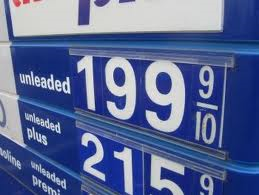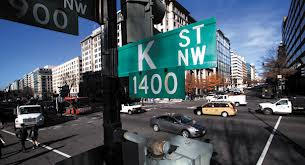 Today’s Q2 GDP estimate came in at 4%, better than expected. Moreover, the dismal -2.9% estimate of Q1 GDP was revised up to -2.1%. As for the underlying components, consumer spending increased at a 2.5% annualized rate, which is solid, and housing grew, which beats the shrinking it’s been doing for the last six months! 2014 GDP should now reach 1.8%, not the 1.375% previously expected. Reasonably decent news.
Today’s Q2 GDP estimate came in at 4%, better than expected. Moreover, the dismal -2.9% estimate of Q1 GDP was revised up to -2.1%. As for the underlying components, consumer spending increased at a 2.5% annualized rate, which is solid, and housing grew, which beats the shrinking it’s been doing for the last six months! 2014 GDP should now reach 1.8%, not the 1.375% previously expected. Reasonably decent news.
Tag Archives: GDP
Pathetic Predictions
On 4/30/14 Q1 GDP (which ended a month earlier) was estimated at 0.1%. On 5/29/14 it was revised down to -1.0%, and on 6/25/14, three months after the end of Q1, it was knocked down to -2.9%! The difference between the first and the third estimates of Q1 GDP is three percentage points, or $125 billion; the annual GDP of New Zealand! The takeaway, trust economic forecasts at your peril!
Increasing Interest
While expecting Q1 GDP growth to be revised down to an annualized rate of -2% from the current -1%, expect the Fed to keep tapering on autopilot and reduce it by another $10 billion to $35 billion/month at the conclusion of the June 17-18 meeting. Markets will now be laser-focused on how and more importantly when the Federal Reserve plans to engineer the first increase in short-term rates since 7/06.
Bearable Budget Battle
The budget deficit is falling rapidly and is now projected to be $642 billion, or 4% of GDP, in FY 2013. It was projected to be $200 billion higher just three months ago. This improvement will delay the next debt ceiling brawl from June to November. And with election season already starting by then, expect substantially reduced political rancor. Despite the improvement, revenues will cover just 81% of federal outlays.
More Mediocrity
The good: the index of leading economic indicators rose, as did retail sales, consumer sentiment, and housing permits. The bad: Europe is now officially in recession, first-time unemployment claims rose, manufacturing activity declined, inflation as measured four different ways is non-existent, housing starts weakened, and industrial production and capacity utilization both fell more than expected. Data like this is why talk of tapering QE3 before January 2014 is exceptionally unlikely.
Gassing Up
Retail sales jumped 0.1% in April and while not great, it beats the 0.5% decline in March! Moreover, it shows that consumers are spending despite the sequester and the payroll tax increase. And a key reason was the huge 3.5% decline in gasoline prices, the largest monthly drop in a decade. If sustained for a year, lower gas prices would save consumers $15 billion/year and boost GDP by 0.1% singlehandedly.
Government Diversion
Federal government spending has steadily increased from 14% of GDP in 1950 to about 25% today. Because of this, legislators and bureaucrats are increasingly lobbied in an effort to have them bestow government largess on one group or another. Unfortunately, this is a zero-sum game. Were government spending to decline, so would the importance of government freeing up energy and creativity to be devoted to the private sector.
GDP Behaving Badly
Despite GDP contracting at an annual rate of 0.1% in Q4 2012, the worst quarter since the end of the recession in 6/09, another recession isn’t in the cards. That’s because the data also showed relatively strong spending by consumers and businesses. Military spending posted its sharpest quarterly drop in 40 years, 22.2% (a one-time event) and exports fell due to falling GDP in Europe. Q1 GDP will be 1%.
Down GDP, Down!
With personal income growth flat, savings rates up and real disposable income down 0.2% in October, it’s not surprising personal consumption grew just 1.4%! The weak pace of income growth will limit Q4 GDP growth to less than 1.5% and GDP growth will be yet weaker in Q1 ’13 (1.2%) as disposable incomes will fall further due to tax hikes and the expiration of the accelerated depreciation business tax credit.
Doctor Doctor, Gimmie the News
In the mid-2000s, American made roughly 160 million doctor visits/year. Since ’09, that number has fallen to 140 million, and has stayed there. Thus, real US per-capita spending on healthcare has been growing at just 2.1%/year, down from 4.3%/year earlier in the decade. Why? It’s a combination of a lousy economy, higher out-of-pocket expenses, a lack of new blockbuster drugs and lower government payments to providers. Collectively, it’s good news.








